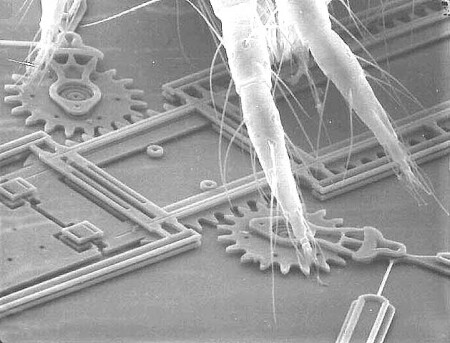De Albuquerque Journal meldt dat Intel een samenwerkingsverband is aangegaan met Next Generation Economy (NextGen), voor het bouwen van zogenaamde MEMS. MEMS staat voor microelectromechanical systems; het gaat daarbij om 'slimme' apparaatjes die voor het blote oog niet waarneembaar zijn, en 'denken', handelen, bewegen en reageren op hun omgeving. MEMES, niet groter dan een paar rode bloedcellen, kunnen bijvoorbeeld toxineniveaus in bloedbanen monitoren, en wanneer nodig medicijnen toedienen, of gebruikt worden als miniscule beveiligingsloten in computers om gevoelige data te beschermen. Het is de bedoeling dat de technologie wordt gestimuleerd en dat MEMS, die ontwikkeld worden in Sandia National Laboratories en in andere gespecialiseerde bedrijfjes, gemaakt kunnen worden in de met Intel in te richten fab op diens locatie in Rio Rancho:
Martinez said the facility would let local companies make their own microdevices at a much lower cost than making the devices themselves. "What you've always wanted is a fab (fabrication plant) that works with small business, an accelerator, so they can get their parts built," Martinez said. Proponents of microelectronics long have said it's the industry of the future. There are 24 companies in Albuquerque that fall under the MEMS label. As a cluster, they are working on producing an economy based on the small devices.
The Next Generation Economy initiative is a public-private partnership that promotes economic development through seven industry clusters; tourism, artisan manufacturing, electronics, biomedicine, software, information technology, MEMS and optics and photonics. The group, funded by the U.S. Department of Energy, runs a business incubator at the Lovelace Respiratory Research Institute in Albuquerque.

